- Cody Meirick
- http://earlymath.erikson.edu/collaborators/CodyMeirick/
- Production Manager
- Early Math Collaborative
- http://earlymath.erikson.edu/
- Erikson Institute, Early Math Collaborative
- Jeanine Brownell
- http://earlymath.erikson.edu/collaborators/jeaninebrownell/
- Assistant Director of Programming
- Early Math Collaborative
- http://earlymath.erikson.edu/
- Erikson Institute, Early Math Collaborative
Public Discussion
Continue the discussion of this presentation on the Multiplex. Go to Multiplex


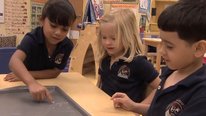
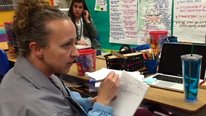
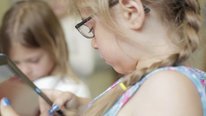
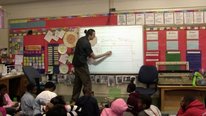
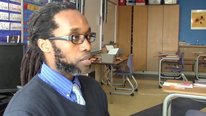
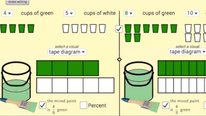
Jeanine Brownell
Assistant Director of Programming
Thanks for your interest in the Early Math Collaborative at Erikson Institute. Our work is focused on teacher development.
We would love to hear from fellow teacher educators and researchers that work with teachers of children age 3 to grade 3. And, of course, teachers please tell us what works/doesn’t work for you in terms of professional development and other supports for the important work you do with young mathematicians.
E Paul Goldenberg
Distinguished Scholar
Both the sentiments of the speakers and the images from the classrooms make this look like an excellent program. Can you list some specific principles that characterize your work that other early childhood teacher education programs could/should adopt? I’m certainly thinking about what the children need to be doing, but also about what a program for adults needs to do to help those adults become flexible, good teachers. How much of what you see as immediate results with the adults “sticks” when they go back to working with young children?
Jeanine Brownell
Assistant Director of Programming
Great questions, thanks! Our guiding principles to teacher development are framed by what we call “the whole teacher approach.” Analogous to the early childhood concept of “the whole child,” our work with adult learners addresses multiple domains of development—content knowledge, attitudes/beliefs, and classroom practice.
In order to simultaneously deepen knowledge, change attitudes and develop effective practices, we rely on five key strategies in our learning labs for teachers:
• Use parallel processing (engage adults in non-routine, interesting math tasks at an adult level and analyze their own experience as learners and implications for their students’ learning)
• Establish a learning community
• Focus on Big Ideas of early math and how children learn them (learning trajectories)
• Analyze video of children and classrooms
• Model reflective practice
Please visit our website for more information: http://earlymath.erikson.edu
E Paul Goldenberg
Distinguished Scholar
Thanks a lot. I’ve just looked at the site and see that there’s a ton to look at and think about! I’ll definitely be back (not quite so late at night).
E Paul Goldenberg
Distinguished Scholar
Another thought that just popped to mind was really the result of a conversation with a colleague here: How do you help teachers over the hurdle of just /noticing/ the mathematics that is already present in what the young children are doing?
Jeanine Brownell
Assistant Director of Programming
Your question is right on target! There are so many mathematical features to children’s play that teachers can extend and build upon. We call that “mathematizing.”
The role of the adult is to recognize what mathematical question or problem is driving the play. For example, is it a question of figuring out which tower is taller, sorting the toy cars by color, fitting a puzzle together, or keeping track of points in a game? Then, teachers can help children see how mathematics is a tool to use by asking questions and providing a nudge to greater precision. Another key role of the adult is to help provide language, gestures, and symbols to represent the mathematics for children—to make the math visible to them.
E Paul Goldenberg
Distinguished Scholar
I just read your reply, and also Jennifer’s response to Susan’s comment (just below). The project is fascinating. All the best to you. I’ll be eager to roam around on your website, and will almost certainly be back in touch! Thanks.
Susan Renoe
Your video mentioned the role of parents in early math education—do you have resources for parents to start the process of ‘mathematizing’ (loved that) during play?
The passion for this program comes across loud and clear in your video, and definitely gets the wheels turnin’ thinking of ways to incorporate programs like this into broader impacts plans.
Jennifer Investigator
Thanks so much, Susan, for your feedback on the video and your terrific question about parents. I’m the PI for the project, and really appreciate the interest.
We are very clear, here at Erikson Institute, that parents are children’s first and longest-lasting teachers. Our real strength, and the emphasis of the Collaborative Math model, is on developing teachers and instructional leaders, and making a whole early childhood center a place where excellent early math instruction is fostered, celebrated, and sustained. For this reason, we provide tools and resources that help teachers and centers reach out to the parents of the children they serve.
Each month, and for each topic we cover, there are Family Math Activities— simple ways for parents and children to do something brief together that relates to what children are exploring with their teachers. We also help classrooms provide a Family Math Library, where families can check out and take home rich children’s literature that lends itself to discussions about math. Inside each book we place an insert with one or two brief ideas for how parents can talk with their child about the mathematical thinking the book suggests. We also help centers create and send home a Family Math Newsletter that gives parents who are interested more information about what their children’s teachers are studying and bringing into the classroom. Finally, we help centers plan and hold a Family Math Night, where parents and children can try out simple math games they can do at home.
Courtney Arthur
This is great to see this type of mathematical engagement with students at such young ages. I am curious to hear about ways in which you are able to really promote these mathematical conversations among early childhood and is it collaborative or more teacher-student focused?
Jeanine Brownell
Assistant Director of Programming
Our goal is to build children’s skills for student-to-student discussion. For young children, this requires the support of the teacher. The teachers we work with use discussion strategies such as partner talk or repeating/rephrasing what a classmate said in order to build daily opportunities for children to talk with and listen to one another.
Also, many of the richest math conversations develop naturally out of the daily routines and activities of the classroom. Children are motivated to talk with each other during play and self-directed times because they need to negotiate and problem-solve with one another. Teachers who are able to “mathematize” these situations can harness children’s interests and motivation for math learning.
Miriam Gates
Researcher
Really great, important work. I was wondering if you there are specific content strands that you have found important and why these content areas seem important or if it is more important to build upon the content that children identify as of interest to them.
Jeanine Brownell
Assistant Director of Programming
We tend to focus on number concepts, measurement, and geometry—and the relationships between these strands. We believe this content is foundational to all of math learning, and, no coincidence, it’s also tends to be what children are most interested in. Questions about “How many?” “How big?” “Is is fair?” and “Does it fit?” are compelling pursuits for young children, and they need math to find the solutions!
Jennifer McCray
Jennifer McCray here again. Your question, Miriam, really gets to the “art” of early childhood teaching. In order to be “take,” it has to capitalize on children’s real and immediate interests and understandings. In order to be effective, however, it has to be grounded in the teacher’s thorough understanding of what content and ideas to emphasize, and what might be “tricky” about that content. For that reason, we don’t offer a lot of activities or curriculum to teachers, but focus on developing teacher knowledge of early mathematics, so that teachers can be responsive in the moment. The math is there in the classroom and in its everyday activities, but it takes a knowledgeable teacher to activate it!
Dr Swinkels
Great summary of this important work.
I am teaching a cohort of Early Childhood teachers next trimester and going to share this with them as a starting point in our first seminar, to get them thinking about the importance of EC math.
Thanks
Jeanine Brownell
Assistant Director of Programming
Dr. Swinkels, thanks for helping prepare the next generation of early math teachers! I encourage you to visit our website where we host many videos that faculty find useful for their math methods courses.
earlymath.erikson.edu
Dr Swinkels
Thanks Jeanine, I have certainly explored the website often. I also recommend your Big Ideas of Early Mathematics book to all my students.
Patricia Rue
Loved this video, and it is so correct. It made me reflect on my early years learning math and my teacher at that time was very harsh, not supportive, and me struggle with math. I work with children between the ages of 3-5 at a Headstart Program. Math is happening all around us. It is so important to support, encourage the children to scaffold themelves into math and make it a enjoyable experience.
Jeanine Brownell
Assistant Director of Programming
Patricia,
I couldn’t agree with you more! It’s so important to build young children’s identities as mathematicians and problem-solvers. Your students are lucky to have a teacher so passionate about math—it’s contagious!
Madelyn Colonnese
This is an excellent video and it is wonderful to see young students engaging in learning mathematics and making it a hands on and fun experience! I was curious about the types of professional development opportunities offered and was wondering if you could share a bit more about this process. Thanks!
Jeanine Brownell
Assistant Director of Programming
At the Early Math Collaborative, we offer teachers PD through learning labs that tend to follow a similar structure:
1. Adult Learning Activity: Greeting – short mixer activity centered around a mathematical task question or task
to break the ice and begin to build learning community
to turn on brain and warm up “math muscles”
2. Adult Learning Activity: Investigation – a mathematical problem task for adult learners (not like high school or college classes, but also not adults pretending to be children)
to engage adults in math for math’s sake
to have fun doing math
to activate prior mathematical knowledge
to build new mathematical understandings
3. What are the Big Ideas? – a discussion of the math concepts underlying the adult learning activities
to put math from adult learning activities into framework of the Big Ideas of early mathematics
to consider what those Big Ideas mean in other contexts
4. What does children’s learning look like? – an examination of the typical learning progression for the math concepts, usually with video examples
to consider what words and actions are evidence of children’s math thinking
to put math ideas into broader context of children’s development
5. Implications for Teaching – a conversation about what all these ideas mean for doing math with children in the classroom, usually with video examples or case studies
to analyze teachers’ instructional decisions
to discuss how teacher words and actions foster children’s thinking
to consider connections between math-focused activities and other learning opportunities, especially how good books can be good starting points for doing math
to put math into the context of real life in a community of young children
Following this structure is effective in engaging the whole teacher deeply in foundational mathematics. We have found that it is important to start by giving adults a fun and interesting experience with real math. That way, they approach the discussion of math ideas and development from a place of problem-solving and making sense. If you start with sharing classroom practice (even effective, math-rich activities), many teachers get so busy thinking about the logistics that it is hard to get them to focus clearly on the underlying math.
Madelyn Colonnese
Thank you for explaining and sharing your model! This progression seems like an effective way to engage teachers with the mathematics content and then moving towards thinking about implications for teaching.
E Paul Goldenberg
Distinguished Scholar
I don’t seem to be able to respond directly to the comment, so this is posted as if it’s brand new: I’m responding to Jeanine’s 11:15a list. I /so much/ appreciate all of this, but really wanted to call out all of the details of #2: for adults, not like HS or college, but also not pretending to be kids; having /fun/ with math /for math’s sake/. Now I feel like re-listing all the other parts. This is /so/ good and /so/ needed. Thankyouthankyouthankyou!
I suppose that after making such a declaration, I have to say “These are the author’s opinions and do not necessarily represent….” But I’m so sure that they do represent…. :-)
Jeanine Brownell
Assistant Director of Programming
Paul, thanks for the enthusiasm! We couldn’t agree more. Engaging early childhood teachers in rich, non-routine, interesting math investigations is a key strategy for developing “the whole teacher.” It simultaneously deepens content knowledge while building a sense of agency and identity as mathematicians.
Dr Swinkels
I love this #2 point as well. Can we get an example of the sort of math problem you would use with the adults?
Lisa Ginet
I am one of the Erikson Early Math Collaborators, too, and here is an example of an adult learning activity we call “counting calisthenics” -
Demonstrate how to count while you move.
○ Touch toes – “1”
○ Touch knees – “2”
○ Touch hips – “3”
○ Touch shoulders – “4”
○ Throw hands up – “5!”
○ Continue counting while repeating movements (toes, 6; knees, 7; hips, 8; shoulders, 9; hands up, 10 …)
○ Keep going until you want to stop.
Ask: “If you kept doing the toes, knees, hips, shoulders, hands up counting calisthenics, what movement would you be doing at 333? at 456? … How do you know?”
This can help adults to consider what they know about the patterns in our number system.
Jeanine Brownell
Assistant Director of Programming
Thanks, Lisa for sharing one of our favorite Adult Learning Greetings/Ice Breakers. It also works well as a purposeful movement break.
One example of an Adult Learning Investigation is an activity in which we ask teachers to create a paper ruler in order to measure the length of a classroom object. All we provide is a paper strip and a small handful of pattern blocks. Having to construct a ruler is a way to make explicit the “rules of rulers” such as consistent length-units and raises questions such as “Do you have to have a 0 mark?” or “Where does the 1 go—in the space or at the mark?” Debriefing this experience with teachers allows us to unpack not only linear measurement concepts, but make connections to use of the number line as a tool for operations.
Further posting is closed as the showcase has ended.